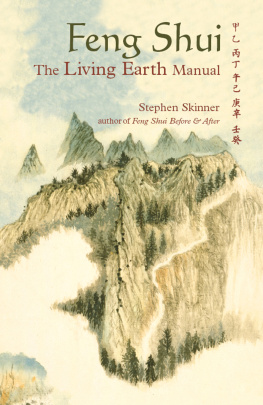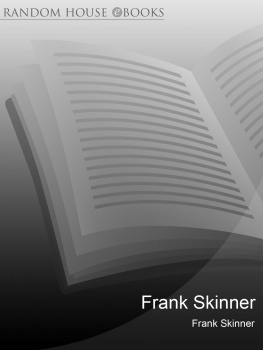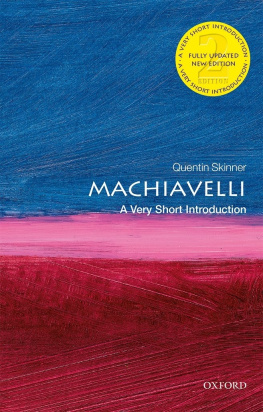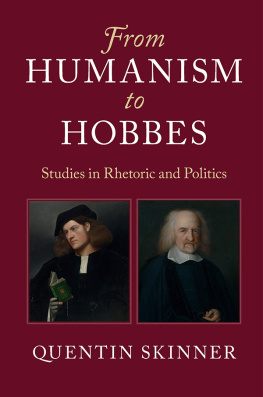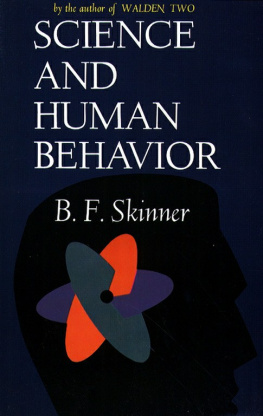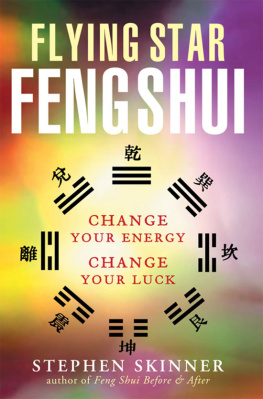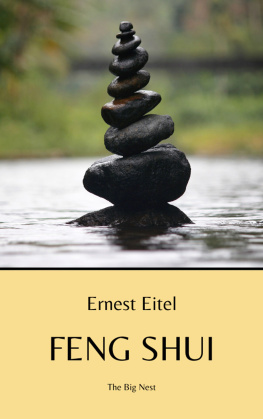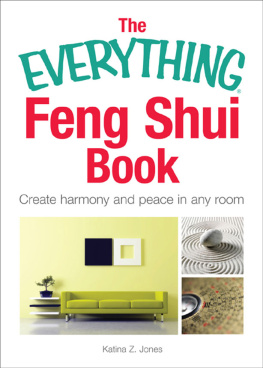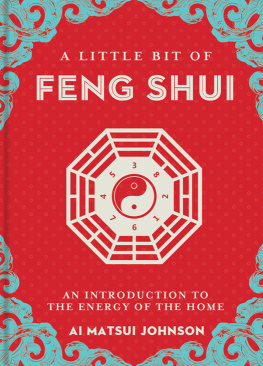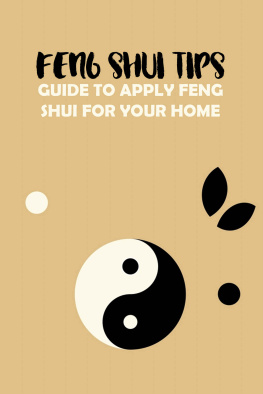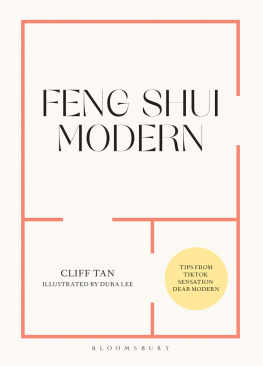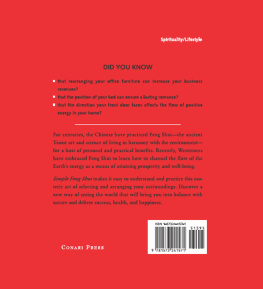About the Author
STEPHEN SKINNER took his degree in English Literature and Geography, at Sydney University. Initially he worked as a Geography lecturer.
Research in Hong Kong in 1975 brought him in touch with local Chinese feng shui practitioners, where his skills with the theodolite complemented their interest in taking precise feng shui compass readings. This lead to Stephen writing the first English book on feng shui published in the twentieth century, the Living Earth Manual of Feng Shui, in 1976 . This book is an updated reissue of that text.
When Western interest in feng shui began to be noticeable in the 1980 s, Stephen produced a second feng shui book, Feng Shui: the Traditional Oriental Way, which became in 1997 an instant bestseller in the United Kingdom and has since gone into many editions.
In 1998 he launched Feng Shui for Modern Living magazine, whose first issue sold , copies per month, more than either Elle Dcor or Wallpaper magazines in the UK. In 1999 he was nominated for PPA Publisher of the Year for his work in launching and publishing this magazine. This magazine helped popularize feng shui around the world, and it appeared in forty-one countries. Skinner even produced a Chinese-language edition in Taipei that ran successfully for thirty-four issues.
In the same year he launched the London International Feng Shui Conference, the largest feng shui conference ever held in the United Kingdom/Europe. The following year Stephen gave one of the three Doyle magazine lectures in New York, sharing the bill with representatives from Martha Stewart Living and Country Living.
Stephen has published a number of books on feng shui, including a book based on the magazine Feng Shui for Modern Living, Feng Shui the Traditional Oriental Way, Keep it Simple Guide to Feng Shui, Feng Shui Before & After , and the coffee-table book Feng Shui Style.
His recent work has included producing a card pack, the Tibetan Oracle, which utilized seventeenth century Tibetan manuscript sources to illustrate the Chinese sixty-year Animal and Element cycle. His interest in pushing back the frontiers of feng shui knowledge in the Western world has resulted in titles like Flying Star Feng Shui and his book on the lo pan, Guide to the Feng Shui Compass.
Stephen Skinner is the author of over twenty books translated into more than twenty different languages. He currently lives in Johor Bahru, near Singapore, where he researches and does consultation in Singapore and around the region.
His website is www.SSkinner.com.
Acknowledgments
My thanks to Bob Lawlor who first indicated the existence of feng shui to me, and to Helene Hodge, who put up with me while I researched the subject.
I also wish to acknowledge the aid of the librarians at the British Library, the Warburg Institute, the Wellcome Library and especially the University of Londons School of Oriental and African Studies (SOAS). My thanks also to John and Franoise Nicholas who were always very helpful, and for their hospitality in Hong Kong, where many of the last practitioners of this ancient art still carry on a flourishing trade. Together with Beth McKillop, they helped me with materials only to be found in Chinese.
My especial thanks to Nick Tereshchenko who gave me my first Ching Dynasty feng shui lo pan , to Beverly Lawton and Lindsay Roberts who typed the first manuscript, and to Evelyn Lip for her help while I was in Singapore.
The drawing of the dragon and tiger schema by J. Bryant is reproduced by permission from the Annals of the Association of American Geographers, vol. , no. , 1974 , p. , fig. , Chuen-yan David Lai. The drawing of the full lo pan is used as an illustration by J. J. M. De Groot in The Religious System of China , Brill, Leiden, 1897 .
Early Chinese sources include the map of a hsueh from the Luan tou chih mi , vol. . The illustration showing the use of the feng shui compass in the Ching Dynasty appeared first in Shao Kao . The elemental forms of the mountains are attributed to Kuo Po in his classic Tsui tien hsuan nu ching-nang hai-chiao ching , and the forms of the nine flying stars appeared in the Ti-li ta-cheng , vol. I. The river formation is drawn from the Shui-lung ching , the Water Dragon Classic.
The Chinese house plans are reprinted with the permission of the publishers from Under the Ancestors Shadow by Francis L. K. Hsu, Stanford University Press, copyright of 1948 and 1967 by Francis L. K. Hsu; and Chinese Houses by Ronald Knapp, Tuttle Publishing.
The author and publisher wish to thank the Hong Kong Government Information Service and the South China Morning Post for their helpful cooperation.
Also thanks to Jin Peh for proofreading the revised edition and to Er Choon Haw for keying the Chinese characters.
Bibliography
BENNETT , STEVEN J . ( 1978 ). Patterns of the sky and earth: the Chinese science of applied cosmology. In Chinese Science, vol. , pp. . University of Pennsylvania.
CHU , W . K . AND SHERRILL , W . A . The Astrology of I Ching. Routledge & Kegan Paul, London, 1976 .
DE GROOT , J . J . M . The Religious System of China , Vol. , book I, part III, chapter XII, pp. 1056 , Brill, Leiden, 1897 .
DE KERMADEC , JEAN - MICHEL . ( 1983 ). The Way to Chinese Astrology . Unwin, London.
DORE , H . ( 1914 ). Researches into Chinese Superstition. Trans. by M. Kennelly. Vol. IV, pp. . Tusewei Printing Press, Shanghai, vols.
DY , VICTOR . Feng Shui for Everybody . Renaissance, Makati, 2000 .
. The Pillars of Fortune for Everybody . Renaissance, Makati, 2001 .
EDKINS , J . ( 1872 ). Feng shui. In Chinese Recorder and Missionary Journal , Foochow, March.
EITEL , E . J .( 1873 ). Feng shui: or the Rudiments of Natural Science in China . Trubner, London, reprinted Cokaygne, Cambridge, 1973 .
FEUCHTWANG , STEPHAN D . R . ( 1974 ). An Anthropological Analysis of Chinese Geomancy . Vithagna, Laos.
FREEDMAN , MAURICE . ( 1966 ). Chinese Lineage and Society: Fukien and Kwangtung . Athlone, London.
. ( 1969 ). Geomancy. In Proceedings of the Royal Anthropological Institute of Great Britain and Ireland ( 1968 Presidential Address), pp. . Athlone, London.
HAYES , J . ( 1967 ). Geomancy and the Village. In Some Traditional Chinese Ideas and Conceptions in Hong Kong Social Life Today . Hong Kong: Royal Asiatic Society (Hong Kong Branch), Hong Kong.
HSU , FRANCIS L . K . ( 1971 ). Under the Ancestors Shadow (revised). Stanford University Press.
KAN , C . Y . ( 1968 ). Feng Shui, its implications on Chinese Architecture, thesis, Hong Kong University.
KOH , VINCENT . Basic Science of Feng Shui: a Handbook for Practitioners . Asiapac, Singapore, 2003 . www.asiapacbooks.com.
. Hsia Calendar 1924 to 2024 . Asiapac, Singapore, 1998 . [Probably the first, and one of the clearest, Chinese Almanacs in English].
LEBRA , W . P . ( 1966 ). Okinawan Religion: Belief, Ritual and Social Structure . University of Hawaii Press, Honolulu.
LEGEZA , LASZLO . ( 1975 ). Tao Magic: the Secret Language of Diagrams and Calligraphy . Thames & Hudson, London.
LIP MONG HAR , EVELYN . ( 1979 ). Chinese Geomancy . Times Books International, Singapore.
LIPPELT , ULRICH WILHELM . Feng Shui Demystified II . AuthorHouse, 2004 .
LO , RAYMOND . Period and Harmony Combined Lo Pan Interpretation . [A manual accompanying Raymonds excellent English lo pan ]. Thompson House, Hong Kong, 2001 . www.fengshuicenter.com.hk .
MARCH , ANDREW L . ( 1968 ). An Appreciation of Chinese Geomancy. In Journal of Asian Studies , XXVII, pp. , February.
MARTEL , FRANOIS . ( 1971 ). Analyse formelle de configurations symboliques chinoises. Diplome de lEcole Pratique des Hautes Etudes, Paris.
. ( 1972 ). Les boussoles divinatoires chinoises. In Communications , vol. , Paris.

